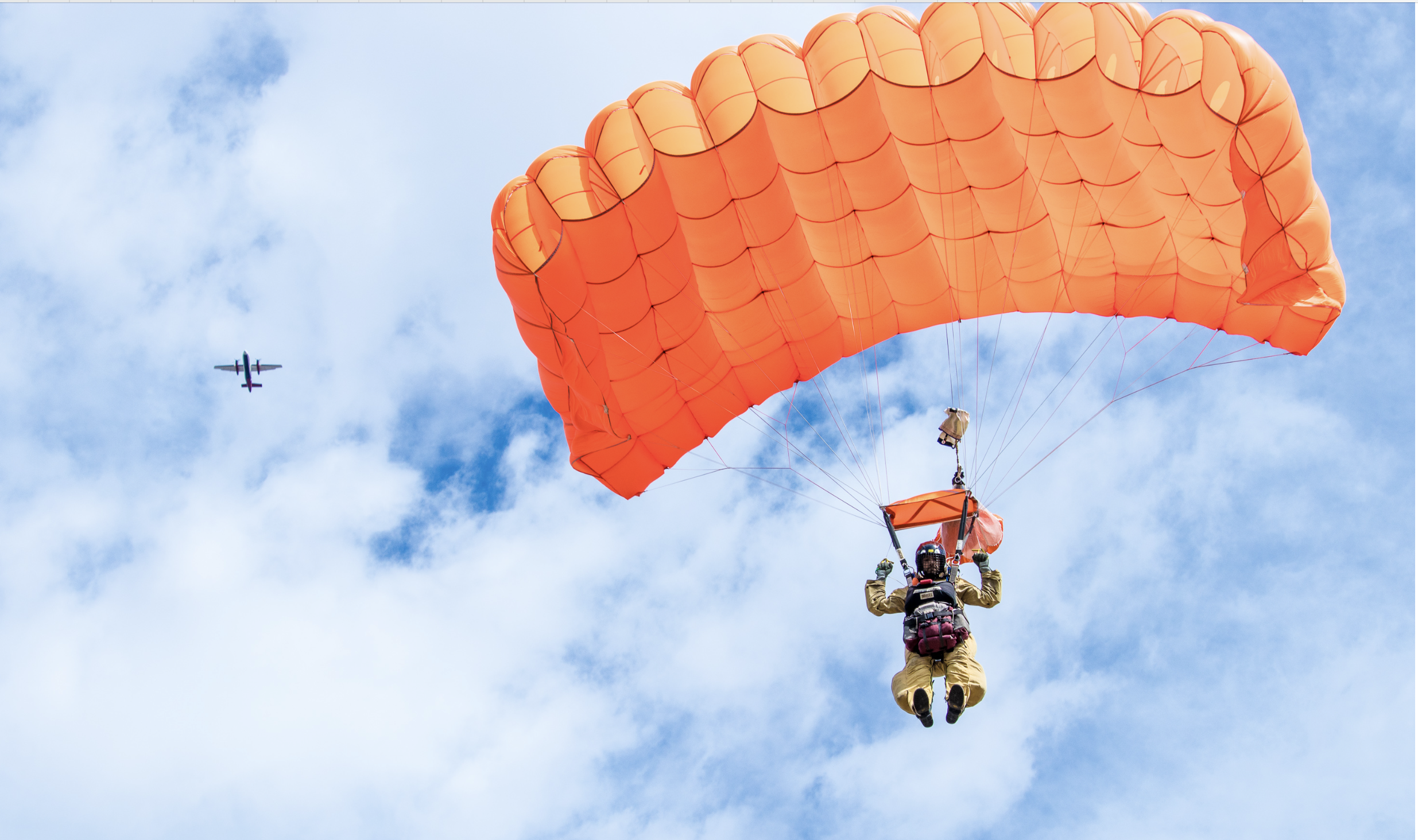
ChatGPT
In the realm of firefighting, there exists a group of elite individuals who embrace danger with every leap: smoke jumpers. These courageous souls hurl themselves from airplanes into the heart of wildfires, armed with little more than parachutes and a steely resolve. The concept of smoke jumping traces its origins back to the 1930s in the United States. In the remote and rugged landscapes of the West, traditional firefighting methods proved ineffective against the swift and unpredictable spread of wildfires. Seeking a solution, the U.S. Forest Service pioneered the practice of parachuting firefighters into remote areas to combat blazes before they could escalate into infernos.
Becoming a smoke jumper is not for the faint of heart. Prospective candidates undergo rigorous physical and mental training to prepare them for the challenges ahead. Physical fitness is paramount, as smoke jumpers must possess the strength and endurance to carry heavy gear while navigating rough terrain. Additionally, they undergo extensive parachute training to ensure they can safely deploy and land in remote and often treacherous locations. Smoke jumpers rely on specialized equipment to carry out their missions. This includes a fire-resistant jumpsuit, helmet, gloves, and boots to protect against the intense heat and flames. Their most crucial piece of equipment, however, is their parachute. Designed for quick deployment and stability in the air, these parachutes are meticulously maintained to ensure they function flawlessly when needed most.
When a wildfire breaks out in a remote area inaccessible by conventional means, smoke jumpers are called into action. Upon receiving the call, a team of smoke jumpers quickly assembles at their base, where they are briefed on the location and severity of the fire. After donning their gear and conducting final equipment checks, they board a specially equipped airplane and ascend into the sky. As the aircraft approaches the drop zone, tension mounts among the smoke jumpers. With adrenaline coursing through their veins, they stand ready at the open door, poised to leap into the unknown. When the moment arrives, they hurl themselves from the plane, plummeting towards the earth below. As they freefall through the sky, smoke jumpers must maintain control of their bodies while scanning the terrain for a suitable landing spot. With only seconds to spare, they deploy their parachutes, feeling the sudden jolt as the canopy catches the air and slows their descent. From this point on, it’s a delicate dance between the jumper and the elements as they steer their parachutes towards the target area below.
Touching down in the midst of a wildfire is no easy feat. Smoke jumpers must contend with uneven terrain, dense vegetation, and swirling winds as they aim for their landing spot. Once on the ground, they waste no time springing into action, shedding their parachutes and grabbing their tools to begin battling the blaze. Armed with chainsaws, shovels, and other firefighting equipment, smoke jumpers work tirelessly to contain and extinguish the fire. Working in small teams, they cut firebreaks, remove brush, and douse hot spots to prevent the flames from spreading further. It’s a grueling and dangerous task, with smoke jumpers often working long hours in extreme conditions to bring the fire under control.
Despite their training and expertise, smoke jumpers face myriad dangers with each mission. From erratic winds and shifting terrain to falling debris and unexpected flare-ups, the risks are ever-present. In the heat of battle, split-second decisions can mean the difference between life and death, requiring smoke jumpers to remain vigilant and adaptable at all times. Despite the inherent risks, many smoke jumpers find great fulfillment in their work. The camaraderie forged in the face of danger, the sense of purpose in protecting lives and property, and the thrill of confronting nature’s fury head-on are just a few of the rewards that come with being a smoke jumper. For these brave men and women, the call of the wild and the opportunity to make a difference drive them to push beyond their limits and soar into the unknown time and time again.
Smoke jumping is a high-stakes profession that demands courage, skill, and unwavering dedication. From the adrenaline-fueled leap from an airplane to the intense battle against raging flames, smoke jumpers embody the spirit of heroism in the face of adversity. Though the dangers are many, so too are the rewards for those who choose to answer the call and dance with the flames.
As smoke jumpers continue to hone their skills and adapt to new challenges, their contributions to firefighting efforts remain invaluable. In recent years, the frequency and intensity of wildfires have increased, placing greater demands on firefighting agencies around the world. In response, smoke jumpers have played a crucial role in containing wildfires and protecting lives and property. Their ability to access remote areas quickly and efficiently has proven instrumental in preventing fires from spreading and minimizing damage.
Looking ahead, the future of smoke jumping is filled with both promise and uncertainty. Advances in technology and firefighting techniques may enhance the effectiveness and safety of smoke jumping operations. From improved parachute designs to drone-assisted firefighting strategies, innovations continue to reshape the firefighting landscape. However, challenges such as climate change and urban encroachment on wildlands pose significant threats to wildfire management efforts. As smoke jumpers confront these challenges, their adaptability and resilience will be put to the test.
Beyond their role in firefighting, smoke jumpers serve as ambassadors for courage, determination, and sacrifice. Their unwavering commitment to protecting communities and natural resources inspires admiration and gratitude around the world. Whether battling flames on the front lines or sharing their experiences with the public, smoke jumpers embody the spirit of service and selflessness that defines the firefighting profession.
In conclusion, smoke jumping remains a vital and awe-inspiring aspect of firefighting. From its humble beginnings in the 1930s to its present-day prominence, smoke jumping has evolved into a cornerstone of wildfire management. With each leap into the unknown, smoke jumpers reaffirm their dedication to saving lives and preserving the natural world. As they continue to confront the challenges of wildfires with courage and resolve, smoke jumpers serve as true heroes of the wilderness, protecting our communities and ecosystems for generations to come.






